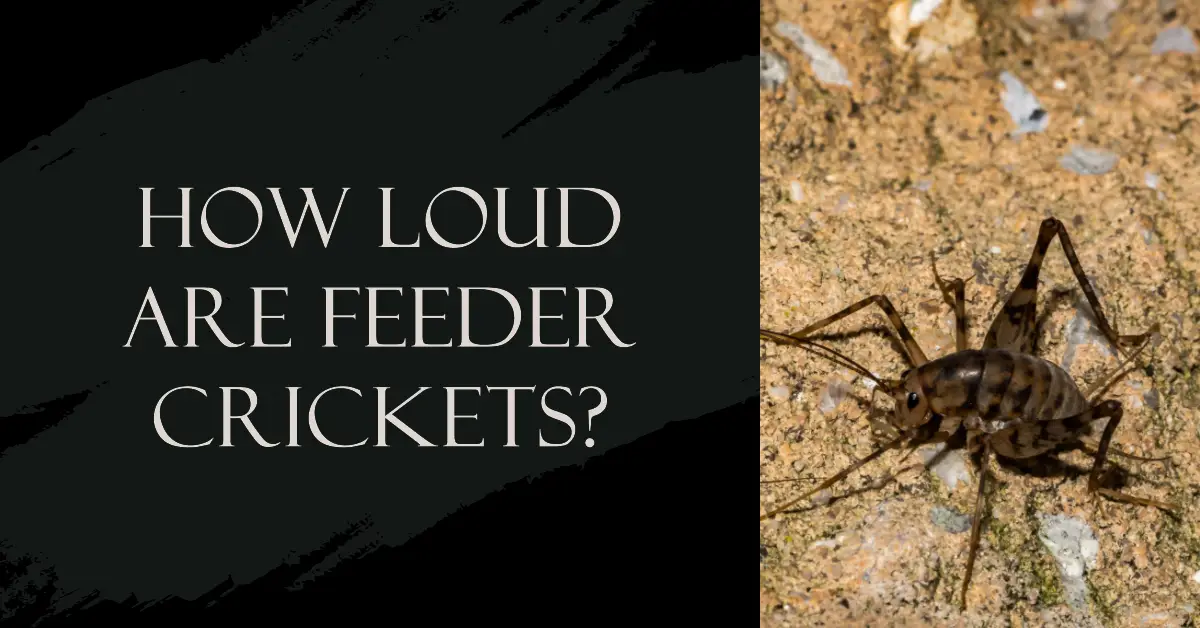
Jeffery Jago is a expert in horticulture and worm breeding. With a background in plant cultivation
Last Updated on March 27, 2023 by Jeffery Jago
Feeder crickets are a popular food source for various reptiles, amphibians, and birds in captivity.
While they offer numerous benefits as a nutritious and accessible option, some people may wonder about the noise levels associated with cricket chirping.
In this article, we will explore the loudness of feeder crickets and delve into the science behind cricket chirping.

The Science Behind Cricket Chirping
Crickets produce their characteristic chirping sounds through a process known as stridulation. Male crickets have specialized structures on their wings called file and scraper, which they rub together to create the sound.
The volume of cricket chirps is influenced by factors such as the size and species of the cricket, temperature, and humidity.
Measuring the Loudness of Feeder Cricket Chirping
To understand how loud feeder crickets can be, we must consider the decibel (dB) scale, which measures sound intensity.
Cricket chirping typically ranges between 60 and 100 dB, depending on the species and environmental conditions.
For comparison, normal conversation is around 60 dB, while a vacuum cleaner operates at approximately 70 dB.
Factors Influencing Feeder Cricket Chirping Volume
Several factors can impact the volume of feeder cricket chirping, including:
- Cricket density: A higher concentration of crickets in a confined space can increase the overall noise level.
- Environmental factors: Temperature and humidity can affect the intensity and frequency of cricket chirping. Warmer temperatures generally result in louder and more frequent chirping.
- Age and gender: Only mature male crickets are capable of chirping, so the age and gender of crickets can impact the overall volume of chirping.
- Mating behavior: Male crickets often chirp louder and more frequently when attempting to attract a mate, which can increase overall noise levels.
- Time of day: Crickets are more active and vocal during the night, so chirping volume may increase during these hours.
Dealing with Noisy Feeder Crickets in Captivity
If you find the noise level of feeder crickets to be bothersome, consider implementing the following strategies:
- Provide ample hiding spots and reduce stress for your crickets, as this can help to minimize chirping.
- Opt for quieter cricket species, such as the silent brown cricket, which produces less noise compared to other species like the house cricket.
Control the temperature and humidity levels in the cricket keeper, as excessive heat or humidity can cause crickets to chirp more frequently.
Use sound-dampening materials, such as foam or fabric, to minimize noise levels in the cricket keeper or surrounding area.
Place the cricket keeper in a separate room or area away from main living spaces, such as a basement or garage, to minimize noise disruption.
Consider using alternative insect feeders, such as mealworms or roaches, which are quieter than crickets.
When to Worry About Feeder Cricket Noise Levels
While cricket chirping is generally harmless, it can become a problem if it interferes with your daily activities or causes distress to your pets. If you find the noise level to be excessive or problematic, consider the following solutions:
- Relocate the cricket enclosure to a more isolated area in your home, away from bedrooms or living spaces.
- Invest in a soundproof enclosure or use sound-absorbing materials to minimize noise.
- Consider a different type of crickets, or feeder insect entirely.
Conclusion
Understanding the loudness of feeder cricket chirping is essential for proper care and management. While their noise levels can vary depending on the species and environmental factors, there are strategies you can implement to reduce chirping volume and maintain a comfortable environment for your family.
By staying informed and taking necessary precautions, you can successfully manage the noise levels associated with feeder crickets.


